Genital Swellingaccording to TCM
Symptom family: Genital Conditions and Swellings
Sub-symptom(s): Red And Swelling Genital
What is genital swelling?
Genital swelling is the enlargement of the genital tissues, which can affect both males and females. This condition can arise from various causes, including infections, allergies, trauma, or underlying medical issues. Symptoms often include discomfort, pain, itching, or redness around the swollen area, significantly impacting an individual's comfort and well-being. Identifying the cause of genital swelling is essential for effective treatment and to prevent potential complications that could arise from untreated swelling.
How does TCM view genital swelling?
Traditional Chinese Medicine (TCM) views genital swelling as a manifestation of imbalances within the body's internal energy systems. TCM practitioners believe that such physical symptoms arise when there's a disharmony in Qi (energy), Blood, Yin, Yang, and Body Fluids.
According to TCM, genital swelling can result from Damp-Heat accumulation, Qi Stagnation, or Blood Stasis in the Lower Burner, which includes the genital area. Recognizing and treating the underlying pattern of disharmony is crucial in TCM, emphasizing a holistic approach to health that aims to restore balance and harmony within the body.
Root Causes of Genital Swelling in TCM
In TCM, genital swelling is often linked to specific patterns of imbalance, such as Damp-Heat in the Lower Burner or Qi Stagnation affecting the genital area. Damp-Heat accumulation can cause inflammation and swelling by disturbing the proper flow of Qi and fluids in the body, leading to symptoms such as redness, heat, and pain in the genital region.
Qi and Blood Stagnation, on the other hand, might result in swelling due to the constrained flow of energy and blood, causing discomfort and enlargement of the tissues. Understanding these patterns allows TCM practitioners to tailor treatments that address the root cause of genital swelling, rather than merely alleviating the symptoms.
Explore below more details about what might cause Genital swelling according to TCM.
- By Syndrome
- By Organ
- Dampness
- Heat
- Liver
Dampness
"Dampness" in TCM is a concept that describes a pattern of disharmony where the body accumulates excess moisture. Imagine the heavy, sticky feeling you get on a very humid day; that's similar to what dampness feels like internally. It can manifest as a sense of heaviness, bloating, sluggishness, or even a foggy mind. This condition is often thought to arise from environmental factors like living in a damp place, dietary habits that promote moisture in the body, or internal imbalances that hinder the body's ability to process fluids properly. In TCM, dampness can obstruct the normal flow of energy and fluids in the body, leading to various symptoms.... see more
Dampness Patterns That Can Lead to Genital Swelling
| Pattern Name | Relevant Symptoms | Relevant Formulas |
|---|---|---|
| Damp-Heat in the Liver | Red and swelling genital, Hypochondrial fullness with warmth relief, Abdominal fullness, Lower abdominal fullness, Bitter taste in the mouth, Sticky taste in the mouth, Lack of appetite, Nausea, Feeling of heaviness, Yellow vaginal discharge, Vaginal itching, Vulvar eczema, Vulvar sores, Bleeding between periods, Midcycle bleeding pain, Red and swollen scrotum, Papules, Itchy vesicular rashes, Urinary dysfunction, Urinary burning, Dark urine... see more | Long Dan Xie Gan Tang | Yin Chen Hao Tang |
Heat
In TCM "Heat" signifies an excess of Yang energy, leading to an imbalance where heat predominates over the body's cool Yin aspects. This condition is metaphorically akin to an internal over-heating. Symptoms indicative of Heat can include feelings of warmth, fever, sweating, irritability, red face, thirst with a preference for cold drinks, and a rapid pulse. The tongue may appear red with a yellow coating. Unlike the common interpretation of heat in terms of temperature, in TCM, it represents a state of hyperactivity or inflammation in the body.... see more
Heat Patterns That Can Lead to Genital Swelling
| Pattern Name | Relevant Symptoms | Relevant Formulas |
|---|---|---|
| Damp-Heat in the Liver | Red and swelling genital, Hypochondrial fullness with warmth relief, Abdominal fullness, Lower abdominal fullness, Bitter taste in the mouth, Sticky taste in the mouth, Lack of appetite, Nausea, Feeling of heaviness, Yellow vaginal discharge, Vaginal itching, Vulvar eczema, Vulvar sores, Bleeding between periods, Midcycle bleeding pain, Red and swollen scrotum, Papules, Itchy vesicular rashes, Urinary dysfunction, Urinary burning, Dark urine... see more | Long Dan Xie Gan Tang | Yin Chen Hao Tang |
Liver
In TCM the Liver is viewed as the organ responsible for the smooth flow of Qi, Blood, and emotions throughout the body. It plays a key role in regulating mood, storing blood, supporting digestion, and ensuring the health of tendons and eyes. When the Liver malfunctions or is imbalanced in TCM, it can lead to a range of issues such as irritability, mood swings, menstrual irregularities, eye problems, and muscular stiffness or pain. A malfunctioning Liver in TCM reflects not only physical disturbances but also emotional and mental disharmony, emphasizing the holistic approach of TCM in addressing health and wellness.... see more
Liver Patterns That Can Lead to Genital Swelling
| Pattern Name | Relevant Symptoms | Relevant Formulas |
|---|---|---|
| Damp-Heat in the Liver | Red and swelling genital, Hypochondrial fullness with warmth relief, Abdominal fullness, Lower abdominal fullness, Bitter taste in the mouth, Sticky taste in the mouth, Lack of appetite, Nausea, Feeling of heaviness, Yellow vaginal discharge, Vaginal itching, Vulvar eczema, Vulvar sores, Bleeding between periods, Midcycle bleeding pain, Red and swollen scrotum, Papules, Itchy vesicular rashes, Urinary dysfunction, Urinary burning, Dark urine... see more | Long Dan Xie Gan Tang | Yin Chen Hao Tang |
TCM Herbal Formulas for Genital Swelling
In addressing genital swelling, TCM utilizes a variety of herbs tailored to counteract the underlying causes. Amber (Hu Po), known for its sweet and neutral properties, targets the Bladder, Heart, and Liver Channel, making it beneficial for treating Heart Blood Deficiency and Blood Stagnation.
By focusing on these specific imbalances, such as clearing Damp-Heat or moving stagnant Qi, TCM practitioners can effectively reduce swelling and restore the body's natural balance. This approach underscores the importance of individualized treatment plans in TCM, which are based on a thorough understanding of the patient's unique pattern of disharmony.
Explore below some TCM herbal formulas used to address genital swelling, organized by cause and by formula type.
- By Cause
- By Formula Type
- Dampness
- Heat
- Formulas that clear heat from the organs
- Formulas that clear heat and expel dampness
Top Formula for Dampness:
Long Dan Xie Gan Tang
Suitable for Dampness patterns that may cause genital swelling, such as Damp-Heat in the Liver
Learn moreAll Formulas Recommended for Genital Swelling Caused by Dampness
| Formula | Patterns Suitable For |
|---|---|
| Long Dan Xie Gan Tang | Damp-Heat in the Liver |
| Yin Chen Hao Tang | Damp-Heat in the Liver |
Top Formula for Heat:
Long Dan Xie Gan Tang
Suitable for Heat patterns that may cause genital swelling, such as Damp-Heat in the Liver
Learn moreAll Formulas Recommended for Genital Swelling Caused by Heat
| Formula | Patterns Suitable For |
|---|---|
| Long Dan Xie Gan Tang | Damp-Heat in the Liver |
| Yin Chen Hao Tang | Damp-Heat in the Liver |
Formulas that clear Heat from the Organs
These formulas are suitable for some genital swelling-causing patterns like Damp-Heat in the Liver.
One such formula is Long Dan Xie Gan Tang, with chinese gentian as a key herb.
Formulas that clear Heat and expel dampness
These formulas are suitable for some genital swelling-causing patterns like Damp-Heat in the Liver.
One such formula is Yin Chen Hao Tang, with virgate wormwood as a key herb.
Acupoints for Genital Swelling
Acupuncture, a key therapeutic modality in TCM, employs specific acupoints to alleviate genital swelling by addressing the underlying energetic imbalances. Points such as Dadun LIV-1, Ligou LIV-5, and Ququan LIV-8 on the Liver Channel are selected for their effectiveness in regulating Qi in the Lower Burner, clearing Damp-Heat from the genitourinary system, and invigorating Liver Qi.
Additionally, points like Pangguangshu BL-28 and Xialiao BL-34 on the Bladder Channel play crucial roles in regulating the Bladder, benefiting urination, and resolving masses. The strategic selection of these acupoints reflects TCM's holistic approach, aiming not just to treat genital swelling but to harmonize the entire body, thereby preventing future occurrences.
Explore below some acupoints used to address genital swelling, organized by meridian.
- By Meridian
- Liver Channel
- Bladder Channel
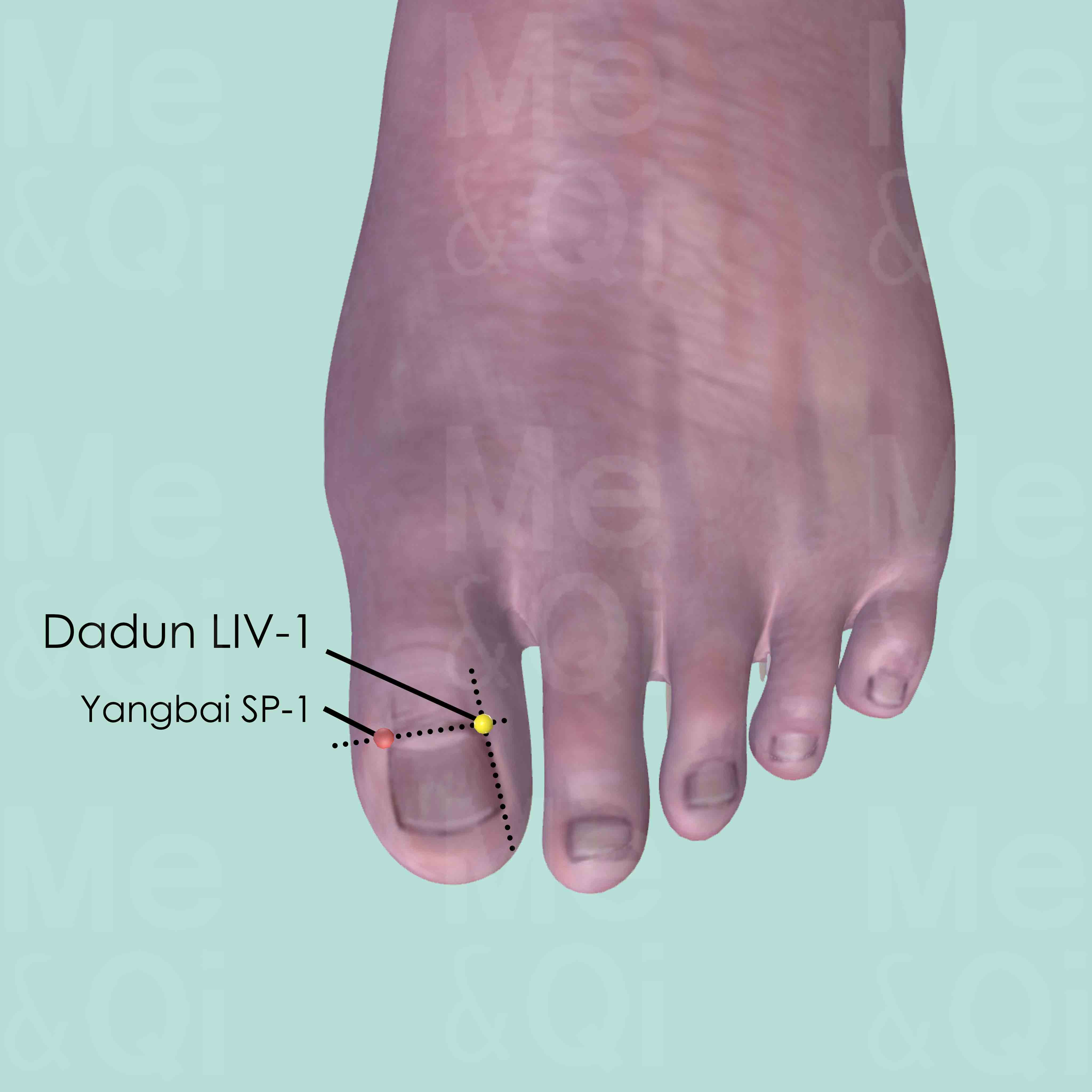
Dadun LIV-1
On the lateral side of the dorsum of the great toe terminal phalanx, between the lateral corner of the nail and interphalangeal joint.
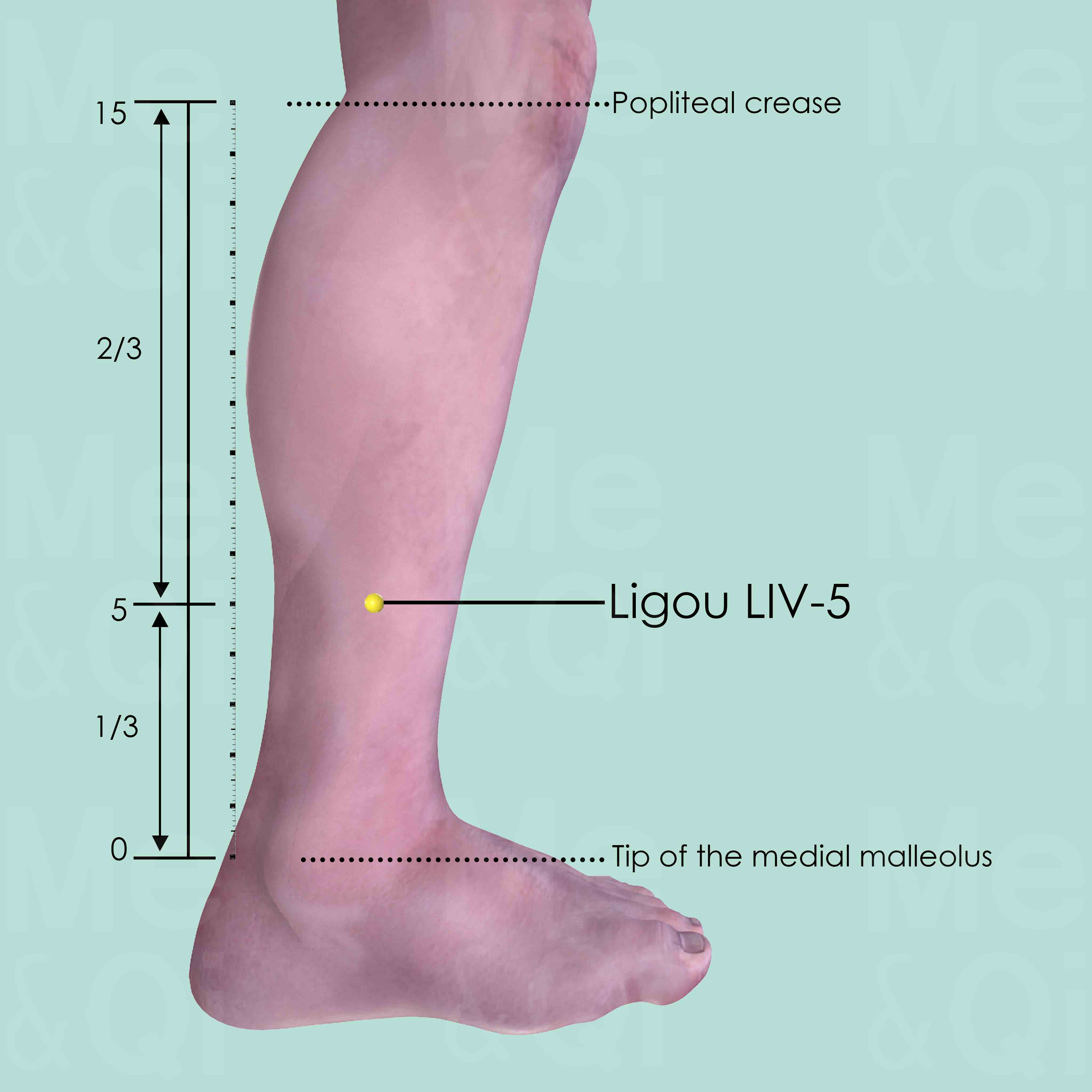
Ligou LIV-5
5 cun above the tip of the medial malleolus, on the medial aspect and posterior to the medial crest of the tibia.
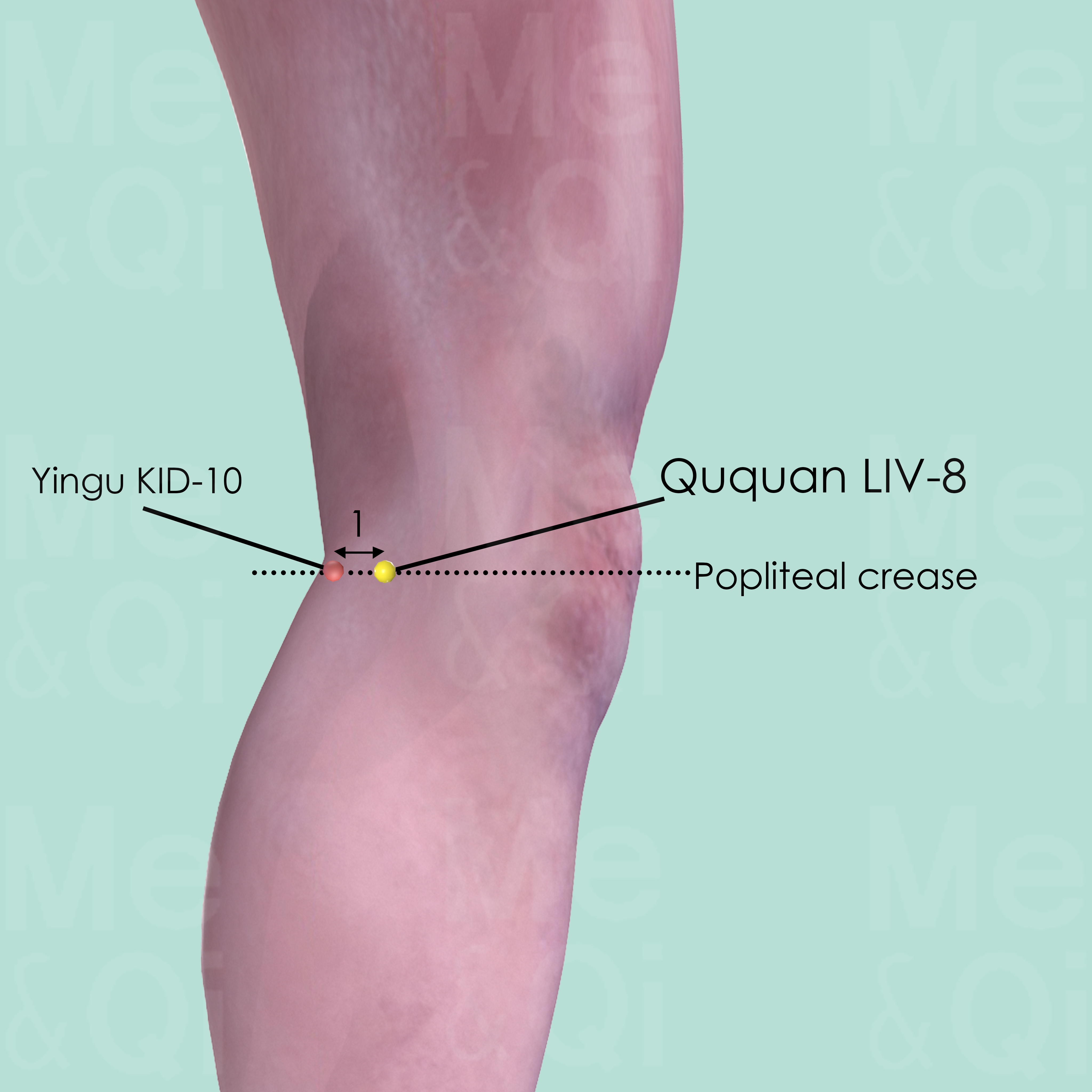
Ququan LIV-8
On the medial aspect of the knee join. Flex the knee and locate the point above the medial end of the popliteal crease, posterior to the medial condyle of the tibia, on the anterior border of the insertion of semimembranosus and semitendinosus muscle, about 1 cun anterior to Yingu KID-10.
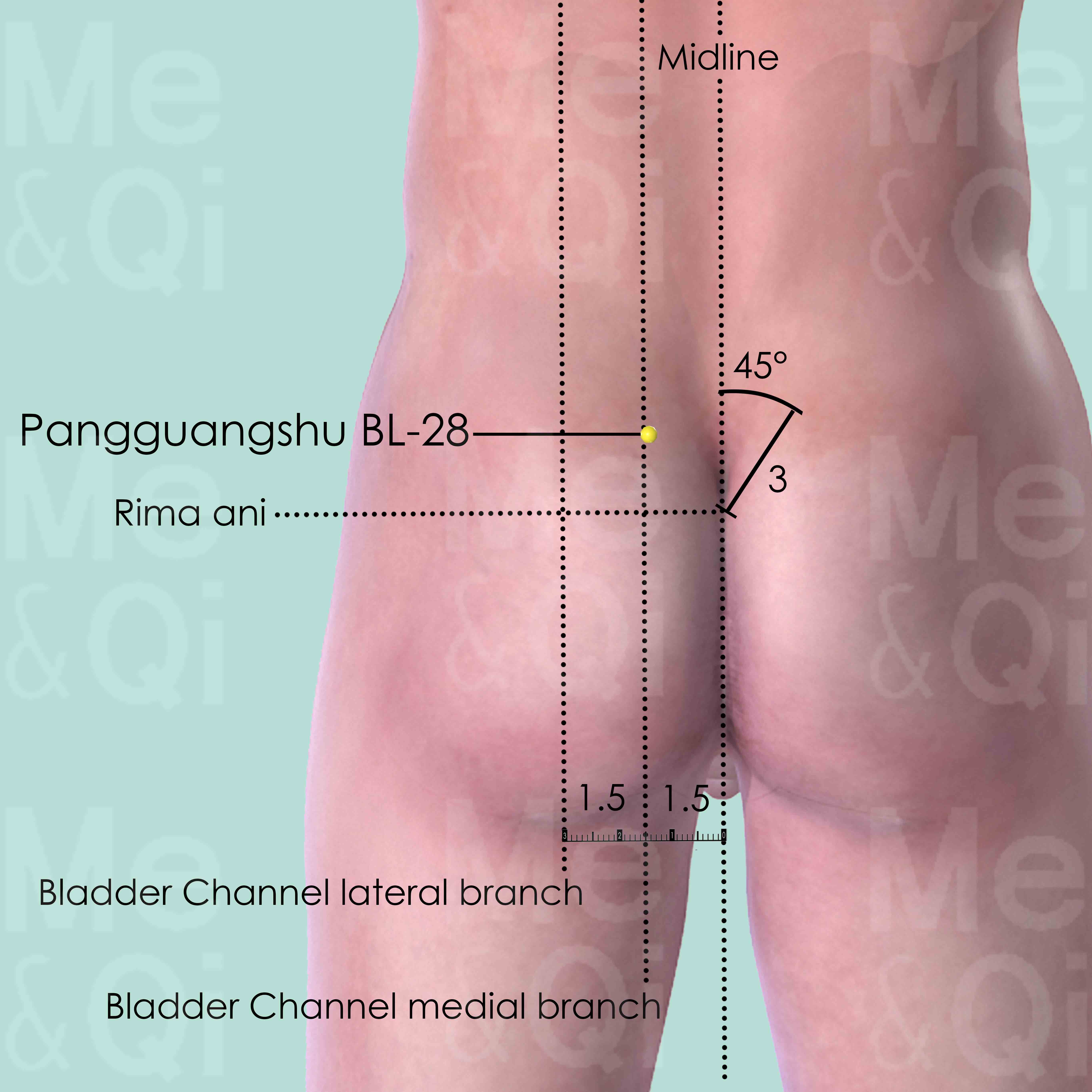
Pangguangshu BL-28
At the level of the 2nd posterior sacral foramen, 1.5 cun lateral to the posterior midline, in the depression between the medial border of the posterior superior iliac spine (PSIS) and the sacrum.
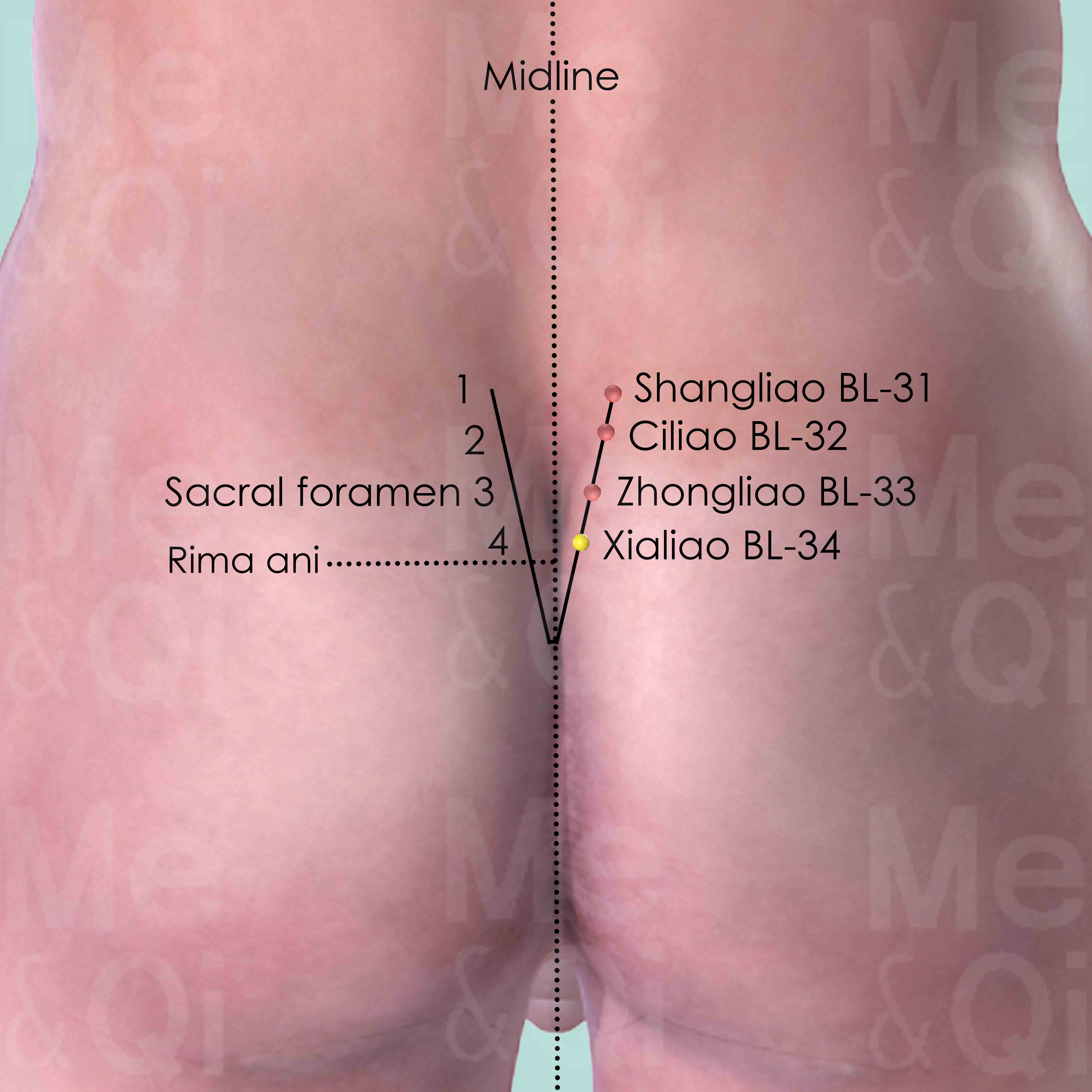
Xialiao BL-34
In the 4th posterior sacral foramen, between the posterior superior iliac spine and the midline.
